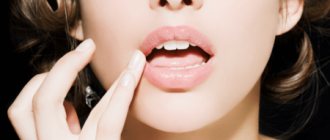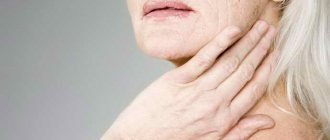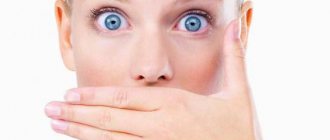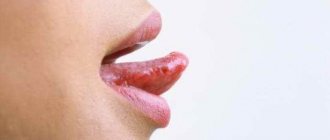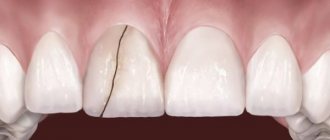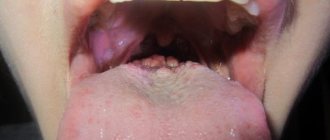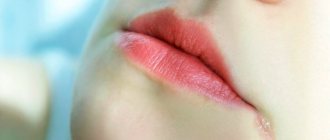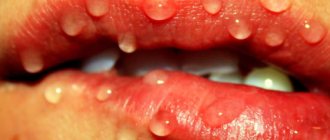A bubble on the gum can be large, small, single or multiple. There are many reasons for the appearance of such a neoplasm, but they have one thing in common - the bubble causes discomfort in the mouth, pain and can lead to extensive infection. In this regard, diagnosis and treatment must be carried out by a professional; self-therapy is not always effective and, as a rule, leads to complications.
Reasons for appearance
The variety of blisters and their location suggests that they can be caused by a variety of diseases. For example, a purulent bubble on the gum indicates tooth inflammation, and a white, small one is evidence of herpes.
In order to have an idea about the upcoming treatment, it is necessary to know the reasons for the appearance of this unpleasant and painful neoplasm.
- Herpes. Basically, this disease manifests itself as white, multiple blisters in the corner of the mouth and on the lip. But it happens that they cover the gums. They occur when the immune system is weakened, for example, with a severe cold. A white herpes bubble on the gum can appear in both an adult and a child. Left untreated, the blisters spread deep into the mouth and prevent a person from eating normally. The most unpleasant thing about herpes is its specific course - 3 days after the first blisters appear, they begin to burst and their contents leak into the oral cavity. Ulcers under the blisters are extremely painful.
- A bubble on the gum may be a consequence of periodontitis - inflammation of the bone tissue of the tooth. Usually the cause of this disease is advanced caries. Pus accumulated around the root of the tooth comes out and is localized under the surface of the gum mucosa. Such a neoplasm is usually solitary, but can reach a large size. The danger of this condition is that pus enters not only the gums, but also the root of the tooth, and sometimes the maxillary sinuses.
- A red bubble on the gum may indicate a viral or fungal disease. Usually such a neoplasm is quite painful.
- Autoimmune diseases are also accompanied by blisters on the gum tissue. This phenomenon is observed in people with HIV infection, tuberculosis or chronic hepatitis. Also, gum disease occurs in people undergoing chemotherapy, which, as is known, greatly suppresses the human immune system.
- A small bubble without pus may be a manifestation of a food allergy. Most often, such a bubble occurs on a child’s gum, since children under 5 years of age are extremely allergic.
- The bubble may be the result of physical trauma to the mucous membrane or its burn.
- Sometimes, after a severe sore throat or tonsillitis, blisters appear on the gums; this may be a consequence of viral pemphigus. They are caused by a severe weakening of the immune system.
Causes of white pimples on the gums of infants
Whitish or red pimples are a fairly common occurrence in children of the first year of life; they can be of various shapes (flat and convex, like balls, oval and round), different to the touch (hard or soft), multiple or single. In any case, if any pathology is detected in the child’s mouth, you should consult a specialist.
The reasons for the appearance of pimples are completely varied, both dangerous and harmless:
- Stomatitis is the appearance of groups of white dots on the gums due to infection both in the child’s body and directly on the oral mucosa. It occurs due to trauma to the connective tissue of the epithelium. There are several types of stomatitis, which are caused by various viruses: Herpes (caused by the herpes virus) - the appearance of white-yellow erosions that cause itching and burst. The picture becomes clearer with accompanying symptoms (enlarged lymph nodes, tearfulness, fever and refusal to eat).
- Aphthous (several causative agents - bacteria, lack of vitamins, damage to the mucous membrane, allergies). First, swelling and redness appear on the gum - inflammation, after which several white dots become visible, they are called aphthae. Additional symptoms include increased salivation, crying, strong breath, fever and lack of appetite.
- Candidiasis (caused by candida fungi). Characterized by the appearance of painful and itchy white spots. Additional symptoms are bleeding gums, unpleasant odor, burning sensation, crying.
- Cysts are white spots filled with pus, around which there is swelling. They arise as a result of infection entering the dental canals: in the presence of stomatitis or other damage to the mucous membrane in the oral cavity. Cysts often require surgical removal, but they can burst on their own, after which ulcers and fistulas form in their place.
- Calcium deficiency can also cause white spots on the gums. In the event that the child is breastfed, and the mother’s milk does not have enough of this mineral due to poor unbalanced nutrition, or the baby has entered the stage of introducing complementary foods, but does not receive enough dairy products (milk, cottage cheese and kefir).
- Wen (soft white pimple). If it does not increase, then it does not require treatment and may disappear on its own. If it grows, it requires surgical removal.
- Epstein's pearls (these are peculiar cysts that form from the epithelium). Outwardly, they look like micro pearls, which is why they got their name. They do not require treatment and resolve on their own.
Read also: How to treat gum disease
Stomatitis in a child
In addition to white pimples, a child may be bothered by the appearance of white plaque on the gums. This alarm bell should not be ignored, but diagnosis and treatment should begin.
Blisters on gums in children
A child’s body differs from an adult in the speed and uniqueness of its metabolism, as well as weak immunity. Therefore, if a child has a bubble on his gum, there may be several reasons for this:
- chickenpox;
- measles;
- diphtheria;
- scarlet fever;
- stomatitis;
- allergies to food or medications.
The blisters are accompanied by pain, burning and itching. A whitish coating appears on the tongue and mucous membrane of the throat.
Moreover, any virus is transmitted to children through the mouth, since they often bite toys and other objects that were often previously lying on the floor or another child was playing with.
A bubble may appear above an emerging tooth; it is clear that there is no need to treat it, but it causes considerable pain. In any case, if one or more blisters appear on the baby’s gums, you should consult a doctor.
First aid
To eliminate pain and inflammation, use green or herbal tea bags. It is recommended to brew them for 5-7 minutes. After this, a warm bag is applied to the inflamed area.
To combat pain, you can use ordinary green tea, which is pre-brewed and strained. If the patient experiences pain, then propolis tincture can be used.
This product is diluted in equal proportions with water. A cotton swab is moistened in this solution and applied to the gum. First aid, as well as subsequent treatment, is often carried out using a golden mustache.
To prepare the medicine, you need to take a leaf of this indoor flower and wash it. It bends several times until the juice appears. Next, you need to apply the sheet to the affected area for 15 minutes.
With this medicine you can eliminate soreness and pain.
Thanks to the universal properties of the viscous juice of this plant, swelling is relieved and the healing process is accelerated. This flower can be used to rinse the mouth.
To do this, you need to infuse the flower stems in vodka for two weeks. After this, a mouth rinse is used. To do this, take a tablespoon of the product and dilute it in two glasses of water.
Rinsing is done twice a day. When a bubble appears on the gum, it is imperative to provide first aid, which will eliminate the unpleasant symptoms of the disease.
What is forbidden to do
Doctors categorically prohibit remaining inactive when a disease appears. This can lead to complications not only in the patient himself, but also in the people around him, which is explained by the contagiousness of the disease.
When a neoplasm appears, it is necessary to strictly adhere to the rules of hygiene. Violating them can lead to undesirable consequences. Opening the bubbles yourself is strictly prohibited.
The use of iodine or brilliant green to lubricate the affected area is not recommended.
This is explained by the possibility of gum damage from alcohol-containing solutions. Self-diagnosis is strictly prohibited. This is because the same disease can manifest itself in different ways.
When to see a doctor
Most patients do not seek help from a doctor when a blister appears on their gums. But this behavior is wrong. This is explained by the fact that neoplasms can be manifestations of a variety of diseases.
The treatment of neoplasms is carried out by an allergist, dentist, and infectious disease specialist. If a person’s bladder increases in size very quickly, then he needs to immediately seek help from a doctor.
If breathing is impaired, body temperature rises, or there is purulent content in the bladder, you should also seek help from a specialist.
What is an abscess, watch in this video:
First aid
Only a specialist knows what to do with a bubble on the gum. He examines the damaged gum, the patient himself, and prescribes appropriate tests and diagnostic methods. Only after this is treatment prescribed.
But what should a patient do if, before visiting a doctor, a bubble on the gum causes severe suffering? First of all, you need to understand that you cannot touch the bubble, try to squeeze it out or pick it off. Secondly, any remedy used at this stage only relieves acute pain, but does not have a therapeutic effect.
Painkillers include Analgin, Tempalgin, Paracetamol. They can be taken orally, or you can dissolve the tablet in water and rinse your mouth.
For rinsing, you can also use a solution of furatsilin, potassium permanganate or chlorhexidine. Solutions for rinsing should be of the weakest consistency, for example, potassium permanganate should be put in a glass only a few crystals.
Treatment of suppurations
When the question arises of how to treat pustular formations on the skin, they usually resort to the following groups of drugs:
- Local gels and ointments are designed to act directly on the lesions;
- Systemic medications with antibiotic action – affect the patient’s body as a whole;
- Bacteriophages;
- Toxoids or vaccines;
- Immunostimulants and immunomodulators.
The skin is treated with antiseptic agents. These are:
- Fukortsin,
- Chlohexidine C,
- Betadine.
In addition, the use of a weak solution of potassium permanganate and brilliant green has a good effect.
READ ALSO: Watery blisters on the skin and blisters with liquid: why blisters occur
Systemic antibiotics are prescribed if the skin condition is too advanced and cannot be treated with topical agents. In this case, penicillin, tetracycline or aminoglycoside drugs may be prescribed.
Systemic therapy involves the following stages:
- Relief of exacerbations from internal organs.
- Therapeutic diet. It is recommended to exclude fatty, hot, spicy and canned foods from the diet, and increase the consumption of vegetable fats and clean water.
- If a patient has a tendency to allergies, he is prescribed antihistamines and a hypoallergenic therapeutic diet.
- If the rash is differentiated as a boil or carbuncle, surgical intervention may often be necessary. Then the preparatory stage begins with taking steroid and antiallergic drugs. And after opening the pustules, the wound is washed with hydrogen peroxide, and compresses with ointments are applied to kill bacteria.
- Antibacterial drugs can be prescribed only after a culture test of the discharge has been performed. When will the degree of sensitivity to antibiotics be determined?
- Physiotherapeutic procedures. This is usually electrophoresis using antibacterial drugs or ultraviolet irradiation.
Recommended reading:
What is prohibited?
A bubble on the gum of an adult immediately calls for action, because it interferes with eating, speaking and often hurts very badly. Therefore, a person immediately tries to take independent measures. But most only aggravate the situation, and as a result of the patient’s inept actions, a purulent ulcer or general blood poisoning with swelling and fever forms in the mouth.
To prevent this from happening, under no circumstances should you:
- Squeeze out the contents of the bubble with your fingers or any auxiliary tools. With one careless movement, pus or other contents of the bladder can enter the brain.
- You should not heat a sore gum, because viruses and bacteria multiply much more actively in a warm environment.
- You should not increase the prescribed dose of an antibiotic or pain reliever on your own. There are cases when, under the influence of a large dose of Analgin, the human body stopped responding to painkillers, such as iceocaine, novocaine, and so on, which means that subsequent surgery to remove a tooth or a bubble on the gum had to be done without local anesthesia.
Blister on the gum: what is it, why did it appear, methods and treatment options, what not to do
Getting rid of blisters on the gums.
When a blister appears on the gum, a person experiences discomfort and discomfort. An exacerbation of this symptomatology is observed while drinking drinks and eating. Some patients complain of severe pain. If the first tumor appears, the person must be provided with first aid.
Why do they appear?
If discomfort occurs in the oral cavity, we can talk about the presence of a problem in the human body. Bubbles can be diagnosed for a variety of reasons. They can be pink, white or red in color.
There is a clear or yellowish liquid inside. In some cases, the appearance of the bubble resembles a pimple that has purulent contents.
The tissue around the bladder swells in patients.
Quite often the disease occurs due to improper dental treatment, which causes an inflammatory process in their roots. If a dentist incorrectly removes a tooth without performing the necessary cleaning, this can lead not only to the appearance of a new growth, but also to suppuration of the gums.
If the patient has a burn to the oral cavity, this may cause a blister. Quite often, the pathological condition is diagnosed due to gum injuries.
The appearance of a blister can be observed with chickenpox, stomatitis and other diseases of a viral nature. Quite often, pathology is diagnosed when:
- Fistulas;
- Burns;
- Thrush;
- Herpes;
- Wen;
- Kistah.
When new teeth erupt, the amount of saliva produced increases. Tiny neoplasms appear in the places where the tooth appears, which are filled with purulent contents.
During allergic processes, the appearance of blisters is often diagnosed.
Medication and folk therapy
To treat neoplasms in the gum area, traditional medicines or traditional methods of treatment can be used. Treatment with medications must be carried out under the strict supervision of a physician.
Ointments or gels are used to numb the swollen area. Pain in adult patients can be eliminated only with an injection. After diagnosis, the doctor opens the abscess.
After this, the painful area is treated with an antiseptic solution. Patients are recommended to take antibacterial drugs or antibiotics for several days.
If the blister has formed due to herpes, then to treat it, antiviral drugs are used, which are prescribed by the doctor. In order to increase the body's resistance to various inflammatory processes, patients are prescribed antibiotic therapy.
For burns or bruises, rinsing is recommended.
Antiseptics are used for this purpose. The procedure should be carried out after every meal or drink, as well as every two hours in between.
How to cure gumboil on the gums, watch this video:
ATTENTION! To eliminate a blister that occurs due to an allergy, you need to take antihistamines, which are prescribed only by a doctor. To relieve swelling and inflammation, as well as eliminate pain, patients are prescribed:
- Holisapa. The action of the medication is aimed at combating inflammation and swelling, as well as eliminating pain.
- Kalgelya. The medication is most often used during teething in infants. Before applying the medicine, it is recommended to dry the baby’s gums using a gauze pad. After this, a drop of the medicine is applied to the little finger, which is used to rub the gums.
- Kamistada. The medication is taken during the period of the inflammatory process on the mucous membranes. The medication has anti-inflammatory, antiseptic and analgesic effects.
To eliminate a bubble on the gum, you can use traditional medicine, which is characterized by a high level of effectiveness. They are prepared on the basis of:
- Birch buds and oak bark. These ingredients must be mixed in equal quantities. One tablespoon of the resulting raw material is poured into a liter of water and boiled for 10 minutes.
- Salt and soda. To prepare the medicine, you need to take a tablespoon of these components and dilute it in a glass of water. This medicine eliminates inflammation and pain.
- Chamomile and yarrow. These plants have excellent antiseptic properties and also fight swelling and pain. After the medicine has cooled, it is necessary to strain it. The mouthwash should be used every two hours.
The drugs are quite effective in treating the disease, which allows you to get rid of it in the shortest possible time.
In order to eliminate unwanted effects, you must consult a doctor before using a particular product.
How to care
Patients are strictly prohibited from scratching the blisters. This is explained by the fact that this process can lead to infection of the oral cavity and quite serious consequences.
After the tumor has burst and an ulcer appears in its place, it is necessary to use products with antiseptic properties for topical use. In most cases, Holisap or Chlorophyllipt is used.
For this purpose, a soda-salt solution or chamomile decoction can be used. When a blister appears due to herpes, therapy is carried out with antiviral drugs. In this case, it is recommended to rinse the mouth with a decoction of yarrow.
IMPORTANT! If a patient develops a bubble due to an infectious process, then specific therapy is used.
In order to enhance its effect, the patient is recommended to rinse the mouth using pharmaceutical or folk antiseptics. If the blisters are very painful, then painkillers are used.
During the treatment of blisters on the gums, it is necessary to strictly adhere to the rules of hygiene. For this purpose, mouth rinses are carried out using folk or traditional remedies.
First aid
To eliminate pain and inflammation, use green or herbal tea bags. It is recommended to brew them for 5-7 minutes. After this, a warm bag is applied to the inflamed area.
This product is diluted in equal proportions with water. A cotton swab is moistened in this solution and applied to the gum. First aid, as well as subsequent treatment, is often carried out using a golden mustache.
To prepare the medicine, you need to take a leaf of this indoor flower and wash it. It bends several times until the juice appears. Next, you need to apply the sheet to the affected area for 15 minutes.
With this medicine you can eliminate soreness and pain.
Thanks to the universal properties of the viscous juice of this plant, swelling is relieved and the healing process is accelerated. This flower can be used to rinse the mouth.
To do this, you need to infuse the flower stems in vodka for two weeks. After this, a mouth rinse is used. To do this, take a tablespoon of the product and dilute it in two glasses of water.
Rinsing is done twice a day. When a bubble appears on the gum, it is imperative to provide first aid, which will eliminate the unpleasant symptoms of the disease.
What is forbidden to do
Doctors categorically prohibit remaining inactive when a disease appears. This can lead to complications not only in the patient himself, but also in the people around him, which is explained by the contagiousness of the disease.
When a neoplasm appears, it is necessary to strictly adhere to the rules of hygiene. Violating them can lead to undesirable consequences. Opening the bubbles yourself is strictly prohibited.
The use of iodine or brilliant green to lubricate the affected area is not recommended.
This is explained by the possibility of gum damage from alcohol-containing solutions. Self-diagnosis is strictly prohibited. This is because the same disease can manifest itself in different ways.
When to see a doctor
Most patients do not seek help from a doctor when a blister appears on their gums. But this behavior is wrong. This is explained by the fact that neoplasms can be manifestations of a variety of diseases.
If breathing is impaired, body temperature rises, or there is purulent content in the bladder, you should also seek help from a specialist.
What is an abscess, watch in this video:
Prevention
In order to eliminate the possibility of the disease occurring in the future, it is necessary to carry out its prevention in a timely manner. To avoid the occurrence of a pathological condition, it is necessary to carry out timely and high-quality oral cavity prevention.
Bubbles on the gums belong to the category of unpleasant pathological processes.
They are caused by various diseases. During their appearance, first aid is necessary. After carrying out the appropriate diagnosis, the specialist will be able to prescribe rational treatment to the patient.
Source: https://afroditaspa.ru/kozhnye-zabolevaniya/voldyri/voldyr-vo-rtu/na-desne.html
Drug treatment
Therapy with medications depends on the type of disease that caused such a specific manifestation as a bubble on the gum. If the cause is a virus, for example, herpes, then the patient is prescribed a course of an antiviral drug, for example, Acyclovir, immunity-strengthening drugs and antiseptic drugs - Cholisal, Metrogyl Denta and others.
Only a doctor prescribes drugs, and he also calculates the dosage and regimen of use.
If a person has a fungal disease such as candidiasis, then he is prescribed to treat the oral cavity with nystatin or decamine ointment, and the antifungal agent “Clotrimazole” or “Amphoterecin” is also prescribed. Various ointments that relieve gum pain are not prohibited.
Treatment options
You should not remove the dots yourself; white gums may be damaged as a result of such an operation. When you try to puncture a blister, it is easy to introduce an infection into the body; after removing the stains, wounds remain in their place. Treatment methods vary greatly depending on the type of disease; even doctors are unable to distinguish one disease from another in the early stages.
Bohn's nodes and Epstein's pearls resolve on their own and do not require special treatment. Congenital teeth are removed - but this decision is made by the dentist depending on various factors. If the teeth are mobile, they are almost always removed. Pathological diseases are a different matter; they need to be treated, and the sooner the better, but often the disease is diagnosed at a later stage. In the early stages, the disease is difficult to notice, despite the white color of the spots. What actions should be taken for stomatitis:
- It is important to ensure that the newborn drinks plenty of neutral-tasting liquids. It is advisable that during the treatment of the disease, infants have no reason for stress and anxiety.
- Stomatitis is treated with antiseptics: Miramistin, boric acid or other drugs prescribed by a doctor. Effective folk remedies: decoctions of chamomile or calendula.
- A white spot is not the only symptom of stomatitis; it often causes an increase in temperature. Give your child an antipyretic.
- Painkillers will help with discomfort and pain, but read the instructions before purchasing. Some medications should not be given to young children. Solcoseryl and natural oils will speed up recovery from the disease.
Decoctions of calendula or St. John's wort effectively combat white spots from thrush, but these remedies are suitable for treating older children. Bubbles on the baby’s mucous membrane are “dealt with” in a different way: they wipe the mucous membrane with a swab dipped in a soda solution. Antifungal drugs such as Candida are used.
Some products are intended for older children and are contraindicated for small children. Be careful when purchasing.
Read also: Preparations for the treatment of gums
The drug Candide is used for thrush
In severe stages of the disease, the doctor will prescribe strong medications, which, if the required dose is increased, can harm the baby. The white dot needs to be removed, but not at the cost of threatening the life and health of the child. The course of treatment cannot be interrupted, since thrush, seemingly cured, may return after some time with new spots.
Surgery
If the situation with a pimple on the gum has worsened and drug treatment is considered ineffective, surgical treatment is used.
If a bubble with pus is the result of inflammation of the tooth root or the periosteum of the jaw, the abscess itself is opened, and the fistula underneath is thoroughly washed with an antiseptic.
The cause of such a disease must be eliminated, that is, the tooth and periosteum are treated. The tooth is drilled to open the inflamed pulp and remove pus and damaged blood vessels from it.
Sometimes the inflammation is so extensive that the tooth has to be removed completely. In parallel with this treatment, the patient takes a number of drugs that relieve inflammation and pain. They are prescribed by the attending physician.
Treatment with folk remedies
It is no secret that there are herbs and plants that have an analgesic antibacterial effect. These remedies can also be used to treat an incipient disease or for rehabilitation after long-term treatment and surgery. The main thing to remember is that their effectiveness is indicative only in cases of a minor form of the disease or in combination with traditional treatment.
It is especially important to understand this when using folk remedies to treat young children. They may experience an acute allergic reaction to the components of decoctions and infusions. So in this case you need to consult a pediatrician.
Medicinal decoctions are prepared from eucalyptus, calendula, chamomile, oak bark and other plants. The method of preparing the decoction is usually simple - 1 tbsp. a spoonful of dry crushed plant is brewed with 250 g of boiling water and infused for 20-30 minutes. Then strain the broth and rinse your mouth with the resulting product.
You can apply a piece of bee propolis to the resulting bubble; it will relieve inflammation and swelling from the gum mucosa.
Prevention of oral diseases
To prevent blisters from appearing on the gums in the oral cavity, prevention methods must be followed. Firstly, given that in most cases this is a consequence of diseased teeth, you need to monitor their cleanliness and health. You need to brush your teeth morning and evening, every day. Twice a year you need to be examined by a dentist for incipient caries. You can’t eat a lot of sweets, sweets, chocolate and the like. This not only causes tooth decay, but also weakens the human immune system.
Secondly, to strengthen your immune system, you need to adjust your diet. Remove carbonated drinks, sweet pastries, fried, fatty meats, and spicy seasonings from your diet.
Can there be a callus on the gum?
Every patient sooner or later has a dental problem that leads to the loss of one, several or even all teeth.
In this case, in order to prevent the loss of normal chewing function and subsequent problems with the gastrointestinal tract, a person with partial and complete secondary edentia turns to an orthopedic dentist to install an artificial prosthesis. Orthopedists offer patients a large number of designs. These include single crowns, bridges, and removable dentures. Removable dentures can be partial or complete. It all depends on the specific clinical situation.
After installing an orthopedic structure, especially if we are talking about a removable denture, an unpleasant consequence may occur when the prosthesis rubs the gum, which ends in the appearance of an ulcerative surface.
In this clinical situation, you need to know how to treat gums rubbed with a prosthesis.
What should you do when you feel pain in your gums after installing a denture?
First of all, when pain occurs, you cannot correct the situation yourself. You need to see your dentist the next day for correction. Before going to the appointment, you need to put on the prosthesis approximately 1-2 days before and even try to eat in it. This will allow the doctor to immediately see the rubbed area and remove hangnails on the prosthesis that cause this defect.
Removable dentures can be made from the following materials:
- Acrylic plastic.
- Nylon plastic.
- Combined: plastic + metal. Such a prosthesis is called a clasp prosthesis.
The least amount of chafing occurs during the manufacture of nylon prostheses, because this material is very light, soft and flexible. Such designs completely replicate the prosthetic bed, which eliminates the appearance of ulcers.
Some patients, after installing a prosthesis, do not go to the dentist, believing that pain is normal. That after a certain period of time the prosthesis will wear in and the pain will go away, however, this is a misconception.
While a person suffers while waiting for this moment, serious ulcers will appear on the gums, which are not only covered with plaque, but also bleed.
In this case, be sure to contact a specialist, only he will tell you and show you how to treat the gums rubbed with a prosthesis.
In this clinical situation, the dentist first adjusts the prosthesis. After this, the doctor recommends not wearing a denture for 24 hours, but actively rinsing the mouth with decoctions of medicinal herbs calendula, oak bark, chamomile, sage and yarrow.
To make the ulcers heal faster, you can treat them with medicinal oils based on sea buckthorn or rose hips. Collagen plates for the gingival margin “Farmadont” also have rapid clinical effectiveness. These plates contain medicinal plants, enzymatic agents and collagen. They have regenerative and analgesic properties.
However, most often dentists answer the question: “The denture has rubbed the gum, how to treat it?” answer as follows. For treatment, you need to use topical agents: Solcoseryl, Kamestad and Holisad. These drugs allow you to quickly and effectively cure ulcerative surfaces under the prosthesis.
A blister appeared on the gum - what is it? How to treat and what not to do?
A tumor on the gum, no matter what size it is, can cause enormous trouble.
After all, a blister in the mouth is painful; a person feels discomfort when trying to eat, drink, or just talk.
Causes of a blister on the gum: what is it?
Any discomfort in the oral cavity is a signal from the body about a problem. Even an unpleasant aftertaste can indicate serious problems, and if examination reveals a certain formation on the gums, the cause of the appearance must be determined.
A painful pink, whitish or bright red lump that clearly rises above the rest of the skin surface can be filled with a clear or yellowish liquid, and sometimes looks like a pimple with purulent contents or a lump. Tissue swelling localized at the site of the inflammatory process is clearly visible.
A blister appears on the gum: the cause may be:
- poor quality treatment of the tooth, which caused inflammation of its root;
- improper removal of a diseased tooth without proper cleaning, which can also cause swelling, blister formation, and suppuration;
- gum injury: damage from hard food, puncture of soft tissue, for example, by a bone, bruise;
- burn;
- herpes;
- thrush;
- chickenpox, stomatitis, other viral infectious diseases;
- fistula;
- cyst;
- wen.
These are not all the possible reasons for the appearance of a blister on the gum.
In both children and adults, when new teeth appear, the production of saliva increases; in the places where the tooth is about to appear, a rash of tiny red blisters or one rather large one with liquid inside may be observed. At the moment when the tooth finally erupts, it also opens, this is a normal phenomenon.
Most often, the inflammatory process in the upper layer of gum skin with pronounced swelling and fluid accumulated under the exfoliation is associated with herpes or an allergic process. If you are prone to allergic reactions, you should be careful not only when trying new foods or drinks, but also when using unusual oral care products.
Particular attention should be paid to care items, monitor their expiration date, and treat them with an antiseptic. It is best to take brushes with soft bristles; sometimes overzealous cleaning can even lead to the formation of a kind of callus - a blister, which is extremely difficult to heal after opening.
Treatment Methods and Options
For each case, the choice of treatment in case of a blister on the gum is individual. After all, everything depends on the reasons that caused the appearance of education.
If a blister appears after a visit to the dentist, you should immediately visit the doctor again. Even a very small blister can indicate a serious problem that leads to tooth loss or inflammation and destruction of the jaw bone tissue.
Before taking it, especially if you have to wait more than a day, you need to rinse your mouth every 2 to 3 hours with chamomile decoction or soda solution in order to reduce the risk of spreading the infection. The doctor will have to check the correctness of the assistance provided, perhaps open the sealed canal in the tooth and clean it again.
The appearance of inflammation is an ominous sign, so real surgical intervention may be required, when the blister is opened, medications are applied, and cleaning is carried out in case of a purulent process.
Stomatitis and herpes, as well as pemphigus, are a chronic disease that requires constant treatment; they are treated with special medications under the supervision of doctors; self-medication is contraindicated.
Pharmacy ointments and preparations
Drug treatment of a blister on the gum should be carried out under the supervision of doctors - a dentist or dermatologist.
- An area with a swollen area of skin on the gum is numbed with ointment or gel; adults may require an injection.
- After examining and making a preliminary diagnosis, the doctor opens the blister and cleans the area of clear or purulent fluid.
- The area is treated with an antiseptic.
- If the root of the tooth is to blame, it will most likely have to be removed.
- The site of inflammation is again treated with an antiseptic.
- Antibacterial drugs or antibiotics are required for several days.
A blister, the appearance of which is associated with herpes, is treated with antiviral drugs: gels, spray or ointment will always be recommended by a dermatologist.
But that’s not all; a course of treatment will also be needed to increase the body’s resistance, possibly antibiotics.
A burn or bruise is treated with rinses, the oral cavity is thoroughly treated with antiseptics after each drink or meal, and every 2 hours in between.
In case of an allergic reaction, only a doctor will select an antihistamine that will speed up recovery.
The following can relieve pain, reduce swelling and eliminate inflammation:
- Kalgel (mothers of babies often buy it when they are teething): apply to the sore spot, dry it a little with a gauze pad, just squeeze a small drop from the tube onto the little finger and gently rub it into the gum;
- Cholisal – helps with inflammatory processes, reduces swelling, relieves pain;
- Kamistad - perfectly helps with any inflammation of the mucous membrane, anti-inflammatory, analgesic effect and antiseptic effect on tissue.
Source: https://tepcontrol.ru/mozhet-li-byt-mozol-na-desne/
What else should you do?
A person’s diet must include fresh fruits, vegetables, dairy products, boiled fish, meat and various cereals. It is advisable to drink dried fruit compote, jelly and regular still water.
Also, in order to strengthen the immune system, it is necessary to regularly exercise and strengthen the body. Even regular walking has a very beneficial effect. You need to dress appropriately for the weather, this will protect the body from sore throat and other throat diseases, and therefore from acne and blisters in the mouth and throat.

